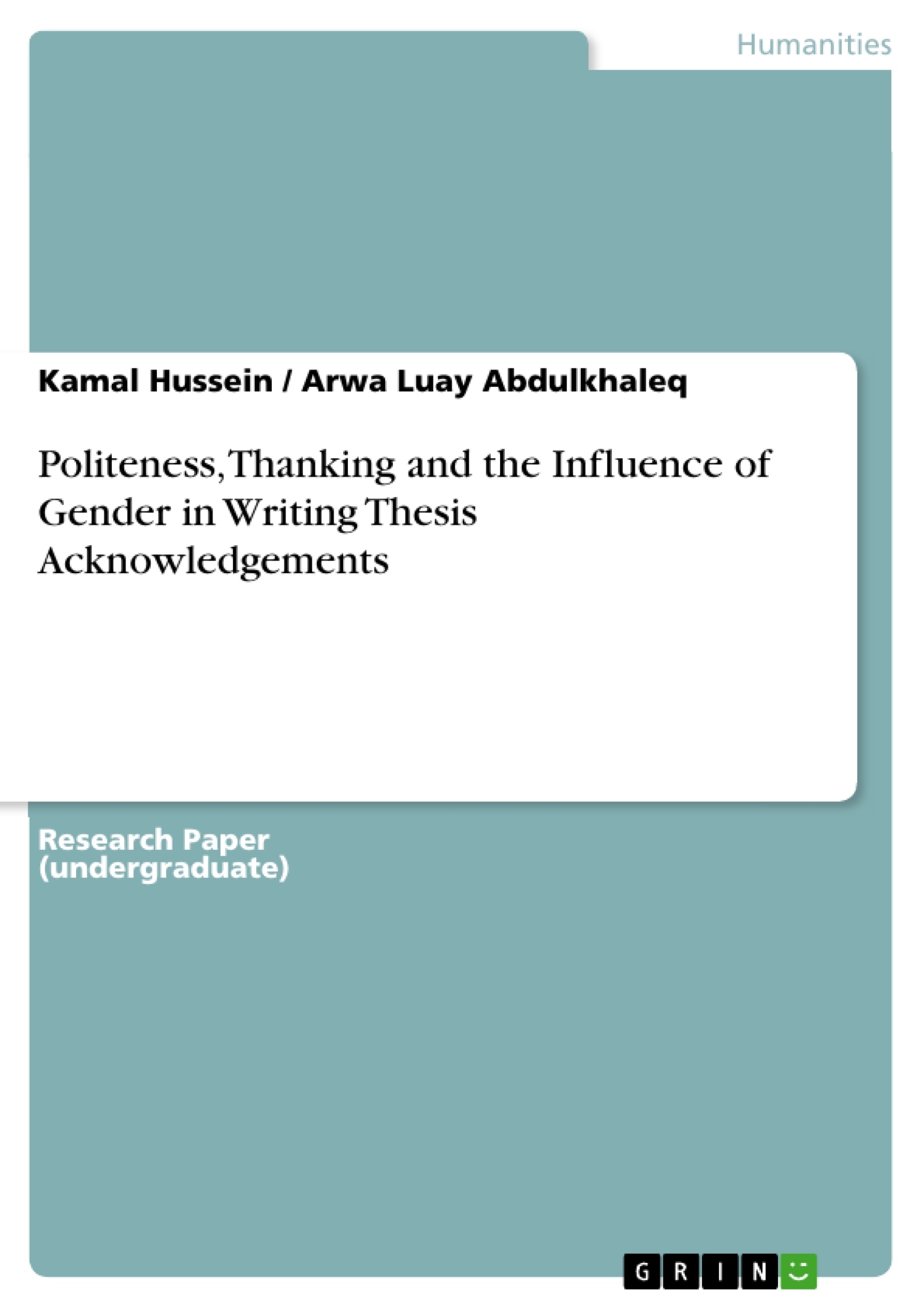Introduction
The present study tackles the concept of politeness of thanking in writing thesis acknowledgements. Despite their importance in academic writings, acknowledgements have been largely neglected in linguistic studies. To those native and non-native speakers (acknowledgers) of a language, acknowledgement writing is not a simple job. In order to make readers fully understand how grateful they are, they have to express their gratitude or realize their thanking correctly and appropriately. However, instructions on how to write a pragmatically accepted acknowledgement are rare. The present study aims at identifying the pragmatic features and patterns of gratitude expressions in acknowledgements and trying to figure out how the politeness principles work in expressing gratitude and investigating the influence of the acknowledger's gender on the pragmatic performance of the speech act of thanking. It is based on the hypothesis that politeness principles affect the performance of the acknowledgers in expressing their gratitude. Also, the acknowledger’s gender may affect his/ her performance of thanking.



